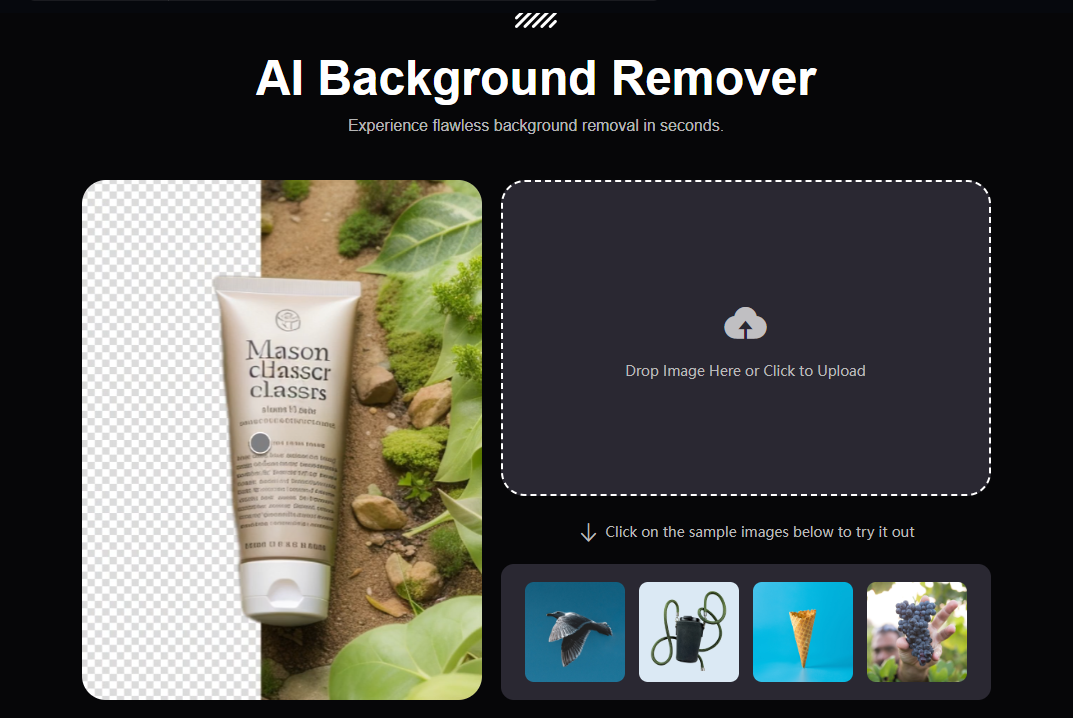In today’s digital age, high-quality visuals are essential—whether you’re designing a presentation, creating content for social media, or setting up an online store. One tool that’s revolutionizing visual editing is the AI background remover. For beginners, this smart technology simplifies the once time-consuming task of separating a subject from its background. Here’s everything you need to know to get started.
What Is an AI Background Remover?
An AI background remover is a tool that uses artificial intelligence to automatically detect and remove the background from an image. Unlike traditional photo editing software that requires manual selection or cutting, AI-based tools analyze the image’s pixels, edges, and objects to instantly isolate the subject—usually a person, object, or animal.
How Does It Work?
AI background removers are powered by machine learning algorithms trained on millions of images. These algorithms learn to distinguish between foreground (main subject) and background (surroundings). Once you upload a photo, the AI processes it in seconds and removes the background, giving you a transparent or solid-color backdrop.
Many tools also offer customization features, such as changing the background color, adding new scenes, or refining edges for a cleaner cut.
Popular Use Cases
- E-commerce – Product photos with clean backgrounds look more professional and increase buyer trust.
- Content Creation – Social media influencers and YouTubers use background removers to create eye-catching thumbnails and posts.
- Graphic Design – Designers save time by removing backgrounds quickly for posters, banners, or web graphics.
- Professional Headshots – You can replace messy or unprofessional backgrounds with clean, studio-style ones.
Best Tools for Beginners
Some user-friendly AI background removers include:
- Remove.bg – Simple and fast with one-click background removal.
- Canva – Offers background removal as part of its design suite (Pro version).
- Adobe Express – Intuitive interface with powerful editing features.
These platforms often require no technical skills, making them ideal for beginners.
The Most Pervasive Problems in Free AI Art Generators
Free AI art generators have taken the creative world by storm, offering users the ability to create stunning visuals with just a few words. While these tools have opened new doors for artists, marketers, and hobbyists, they are not without their flaws. Some issues are so widespread that they affect the overall reliability and usefulness of these platforms. Below are some of the most pervasive problems associated with free AI art generators.
- Lack of Image Consistency
One of the biggest challenges users face is inconsistency in results. Even when the same prompt is used multiple times, the AI may produce wildly different images. This unpredictability can be frustrating, especially for users trying to refine a specific visual concept. For professionals who rely on visual uniformity, this inconsistency is a major limitation.
- Limited Customization Options
Free AI art generators often provide limited tools for customization. Users may not be able to control fine details like lighting, color palette, facial features, or background elements. This lack of control makes it difficult to achieve personalized or brand-specific results, pushing users to either settle for less or turn to paid platforms.
- Quality and Resolution Constraints
Many free AI platforms restrict the resolution of the generated images, making them unsuitable for professional use such as printing or large-scale digital campaigns. Lower image quality also affects the fine detail and clarity of the art, reducing its impact and usefulness.
- Ethical and Copyright Concerns
Free AI art generators sometimes produce images that closely resemble existing artworks, raising questions about originality and copyright. Because these generators are often trained on massive datasets from the internet, they may unknowingly replicate copyrighted material, leading to legal or ethical dilemmas for users.
- Biased or Inappropriate Outputs
AI models can reflect biases present in their training data. This may result in offensive, stereotypical, or culturally insensitive images. While many platforms use filters to block inappropriate content, these filters are not always accurate, and offensive content can still slip through or legitimate art can be unfairly censored.
Final Thoughts
AI background removers are game-changers for anyone working with images. They’re fast, accurate, and easy to use—even if you’ve never edited a photo before. Whether you’re a student, marketer, or small business owner, learning to use an AI background remover can boost your productivity and enhance your visual content. Give it a try—you’ll be amazed at how simple professional image editing can be.




